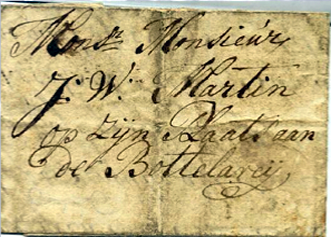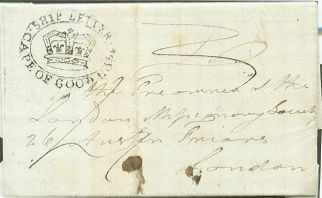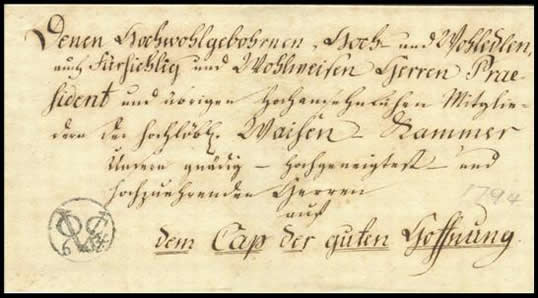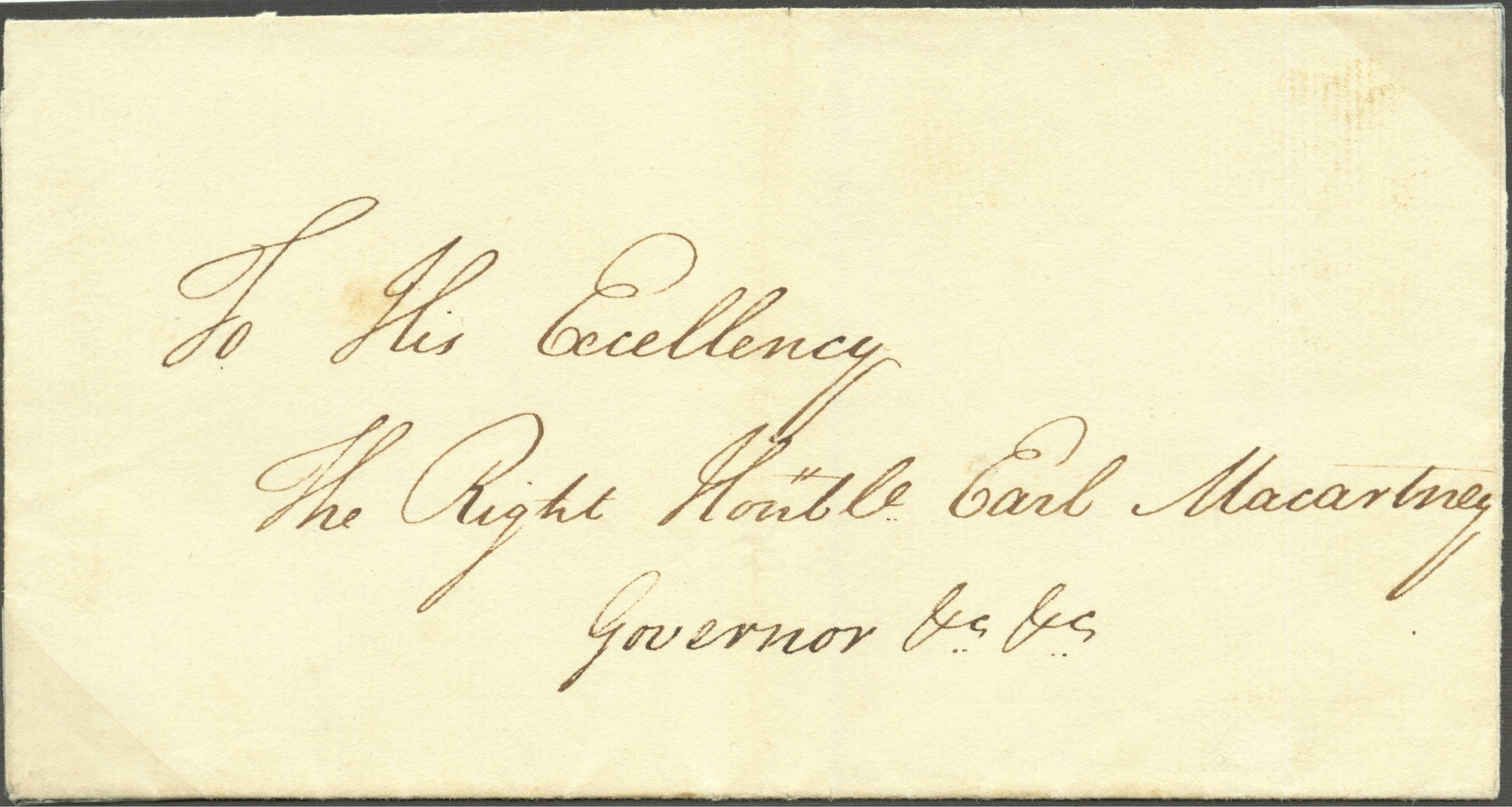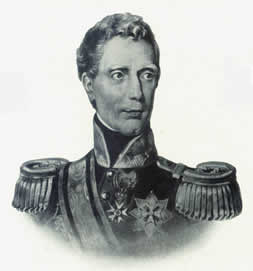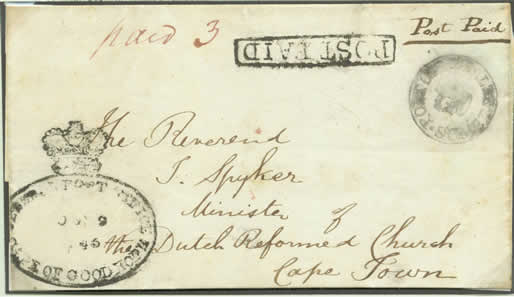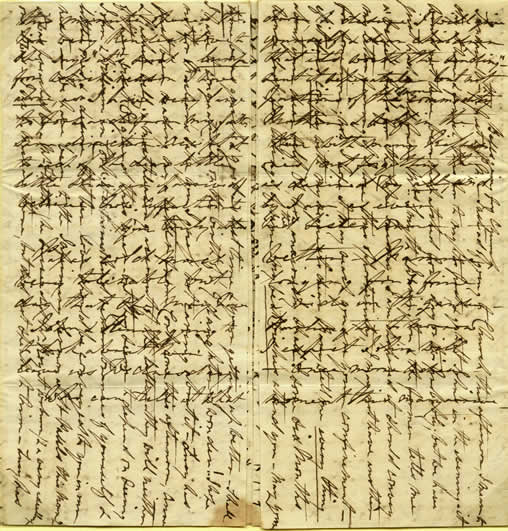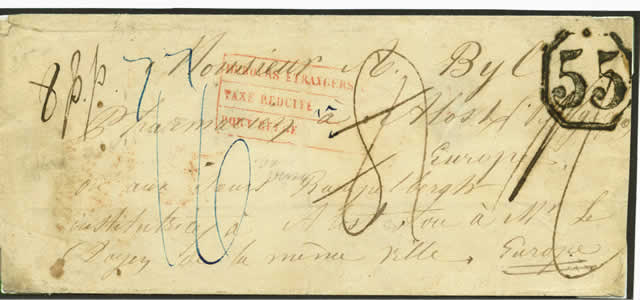Early local correspondence in the Cape of Good Hope was transmitted using letter runners. These were usually Hottentot servants. They wore only a loincloth and could therefore not carry letters on their person. A cleft stick, the so-called briefstock was used for this purpose. The briefstock varied from one to two metres in length and…
Category: Pre-stamp Dutch Post Period
Second British Occupation of the Cape of Good Hope
In 1806 England and France were still at war. The Batavian Republic was sympathetic to the French. As the Cape of Good Hope was becoming a major strategic point and its defenses were virtually non-existent the English launched an expedition for its capture.
The VOC Handstamp
A proclamation signed by the Acting Governor, Johan Isaac Rhenius on 2nd March 1792 formed the basis of the establishment of a postal service at the Cape of Good Hope Colony. The post office dealt exclusively with mail to and from overseas. (see establishment of First Cape of Good Hope post office ). A lot…
The Burger Senate Wax Seal
The Burger Senate Wax seal was used to denote Free Postage during the Batavian Republic period of the Cape of Good Hope, when after the Treaty of Amiens the first British Occupation was terminated and the Cape of Good Hope was restored to the Batavian Republic.
First British Occupation of The Cape of Good Hope
Background to The First British Occupation of the Cape of Good Hope Before examining the history of the First British Occupation of the Cape of Good Hope it is instructive to place it in the context and background of the period. In 1795 the heavily taxed burghers of the frontier districts of the Cape, who…
The Batavian Republic 1803-1806
The Treaty of Amiens provided for the termination of the temporary British occupation of the Cape of Good Hope. The Cape of Good Hope was restored to the Batavian Government on 20th February 1803. Jacob de Mist was appointed as commissioner-generaland Jan Wilem Janssens as governor and ‘general-en-chef’. This effecively made Janssens the head of…
The Crown-in-Circle Postmarks of the Cape of Good Hope
No official post offices were established in the country districts before 1816. The residence of every district’s laddrost served the purpose. The landdrost effectively undertaking the duty of post-master.
Palimpsest Letters
Palimpsest Letters were the result of the high cost of postage and form an interesting part of any Cape of Good Hope Postal history collection. The writer wrote first horizontally, then turned the page through 90 degrees and continued vertically. This way a single page instead of two could be sent, with considerable savings in…
The Octagonal Letterstamp of 1849
By January 1846 the Crown-in-Circle handstamps have been used for almost thirty years. They had not been renewed since their introduction and the Postmaster General referred to their worn state and requested from the Colonial Secretary a set of new stamps. Due to their condition some postmasters had already put the Crown-in-Circle stamps aside. He…
The ‘Coolie Hire Service’ in Cape Town
In 1846 there existed in Cape Town a so-called ‘Coolie Hire Service’.There is a strong likelihood that letters addressed within the vicinity of Cape Town between the period 1846-1855 were conveyed by means of private carriers. This service was entirely private and totally divorced from the operations of the official post office and it’s activities.…
The Dated Letter Stamp
From approximately 1883, three postmarks (PS 4 to 6) sometimes called Argus Wheels, were in use on circulars as well as newspapers of the Cape of Good Hope. Another postmark (PS 7) is, in the main, seen stamped on wrappers and circulars, but its use has also been noted on envelopes. The circle measures 27…

